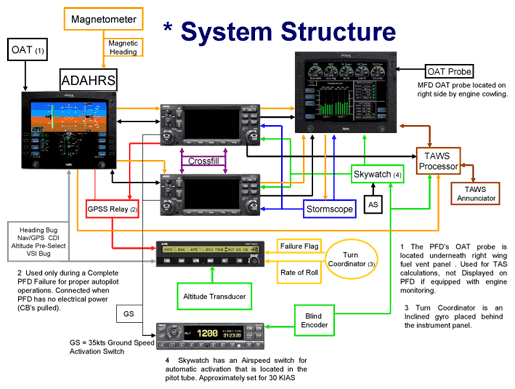
 |
||||||||||||||||||||||||||||||||||||||||||||||||||||||||||||||||||||||||||||||||||||||||||||||||||||||||||||||||||||||||||||||||||||||||||||||||||||||||||||||||||||||||||||||||||||||||||||||||||||
|
|
|
Cirrus Monthly Proficiency Program
|
|||||||||||||||||||||||||||||||||||||||||||||||||||||||||||||||||||||||||||||||||||||||||||||||||||||||||||||||||||||||||||||||||||||||||||||||||||||||||||||||||||||||||||||||||||||||||||||||||
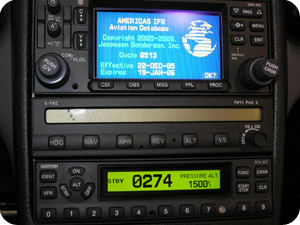 IT’S ALL IN THE HANDLING IT’S ALL IN THE HANDLINGWhether flying an instrument approach, resolving a systems failure, or cruising in VFR conditions, properly managing cockpit workload will greatly enhance safety, efficiency, and effectiveness. Even more importantly, always maintaining positive airplane control is essential to a safe flying experience. A two-axis autopilot, like the S-Tec installed in your Cirrus, can significantly reduce workload by helping maintain control of your airplane while allowing you to attend to other pressing tasks. |
|
|
When using the autopilot to reduce your in-flight workload, it’s extremely important to monitor both the autopilot’s control of the airplane and your flight progress. While the autopilot may be controlling the plane, you should always control the autopilot! |
||
| Page 2 |
Cirrus Monthly Proficiency Program
February– Two for One:
Using the Autopilot to Manage Workload
 THE AUTOPILOT SYSTEM
THE AUTOPILOT SYSTEM
The Cirrus SR-20 and SR-22 can be equipped
with either the Meggit S-Tec 55SR or 55X autopilot system.
While the two
systems have many similarities, the 55X is slightly more
advanced and is the system described in this month’s
Pilot’s World. For the specific model, procedures,
and limitations of the autopilot in your airplane, please
refer to your POH, supplements, and autopilot manual.
|
|
NOTE |
||
| Page 3 |
Cirrus Monthly Proficiency Program
February– Two for One:
Using the Autopilot to Manage Workload
The S-Tec 55X
The S-Tec 55X is a two-axis, rate-based
autopilot system. Trim motors and spring cartridges control
both pitch and roll,
while the essential bus supplies power for the autopilot
computer and trim motors.
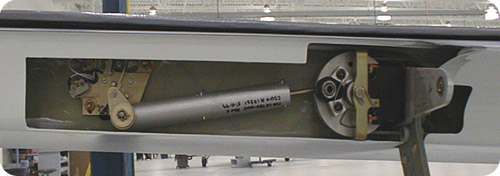
Additionally, altitude information is provided from the static system via an altitude encoder and all roll information comes from an electric turn coordinator located behind the right side of the instrument panel.
In the event of a PFD failure, these independent data sources will continue to provide the autopilot with valid information.
|
|
NOTE |
||
| Page 4 |
Cirrus Monthly Proficiency Program
February– Two for One:
Using the Autopilot to Manage Workload
![]()
The Sky Guide
Many autopilots are delivered with an additional
flight director system. The flight director replaces the flying “W” airplane
symbol with a “wedge.” It also adds two command bars when
an autopilot mode is activated.
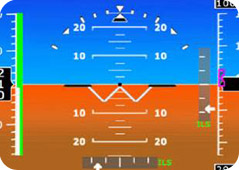 |
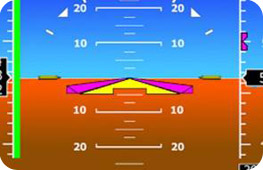 |
When the command bars are magenta, the autopilot is controlling the airplane. When the command bars are green, you are flying the plane and should keep the wedge nestled in the bars. The bars are activated through the autopilot and flight director interface and will depict the command modes entered on the autopilot unit.

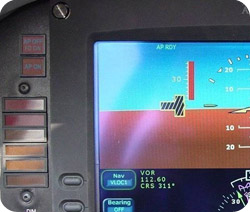 |
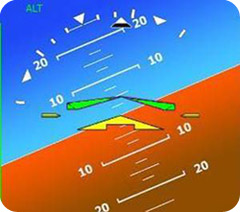 |
|
|
NOTE |
||
| Page 5 |
Cirrus Monthly Proficiency Program
February– Two for One:
Using the Autopilot to Manage Workload
![]()
Know the Limits
Like most aircraft systems, the autopilot and flight director have
limits. Know and follow these limits carefully!
| Page 6 |
Cirrus Monthly Proficiency Program
February– Two for One:
Using the Autopilot to Manage Workload
![]()
Normal Operations
Even during normal operations,
the autopilot is a valuable tool for reducing workload and improving
pilot efficiency. While you may choose to hand fly
at times, autopilot use may be the rule during other flight segments.
Follow these tips and guidelines for efficient autopilot use:
- Preset heading and altitude bugs when accepting a clearance from ATC.
- Use the autopilot when doing checklists or tasks such as leaning the engine, setting up an instrument approach, or altering a GPS flight plan.
- When VFR, use the autopilot to control the airplane so that you can spend more time looking for traffic.
- When setting up or flying an instrument approach, consider using the autopilot so you can spend more time maintaining situational awareness and staying ahead of the airplane.
- Use the autopilot any time your workload is high and needs to be reduced.
|
|
NOTE While the autopilot is an excellent tool for managing tasks, it is also important to maintain proficiency at flying the airplane by hand. Use good judgment when deciding whether to fly by hand or use the autopilot. |
||
| Page 7 |
Cirrus Monthly Proficiency Program
February– Two for One:
Using the Autopilot to Manage Workload
![]()
Abnormal and Emergency Operations
Autopilot use during abnormal and emergency operations can be a
critical step toward reducing your workload and safely resolving
the situation. While every situation is different and requires that you
make appropriate
decisions, the following guidelines will help you use the autopilot
when the pressure is on:
|
|
NOTE |
||
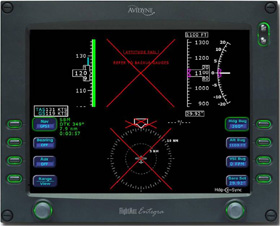
- PFD failure:
Use the GPSS and ALT modes to reduce workload, assist in maintaining airplane control, and simplify your scan. Try to find a GPS approach that doesn’t require a procedure turn and remember that you will not be able to fly headings or pre-select altitudes and vertical speeds.

- Inadvertent IMC encounter
Synch the heading bug, engage the autopilot HDG and ALT modes, and use the heading bug to initiate 180 degree turn back to VMC.
| Page 8 |
Cirrus Monthly Proficiency Program
February– Two for One:
Using the Autopilot to Manage Workload
![]()
Abnormal and Emergency Operations (Continued)

- Unusual Attitudes
If you are severely disoriented, consider leveling the airplane and engaging the autopilot HDG and ALT modes for autopilot recovery.

- Low-oil
Pressure
Engage the autopilot to reduce your workload while completing emergency checklists and trouble shooting. If you suspect oil loss or engine malfunction, consider manually controlling the airplane in preparation for engine failure.

- Alternator
Failure
Engage the autopilot to reduce workload during emergency checklists and trouble shooting procedures. If a single alternator failure is confirmed, continue to use the autopilot. Although it is extremely unlikely, a dual alternator failure may require that the autopilot be disconnected to conserve battery power.
|
|
Practice autopilot use in each of these situations with a CSIP instructor to help maintain proficiency and ensure proper procedure. | ||
| Page 9 |
Cirrus Monthly Proficiency Program
February– Two for One:
Using the Autopilot to Manage Workload
![]()
Abnormal and Emergency Operations (continued)
|
|
There are also some notable abnormal and emergency situations during which autopilot use should be avoided or may be impossible: |
||
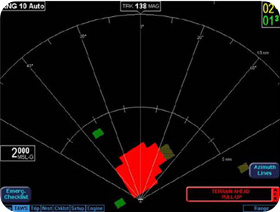
- TAWS escape maneuver
The immediate response to a TAWS warning should be manual control inputs to establish a full-power Vx climb. Immediately overpower and disengage the autopilot as necessary.
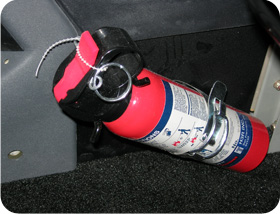
- In-flight Cabin
Fire
Establish and maintain manual control, as the autopilot will disengage when power is removed from electrical system during the emergency checklist. An exception is if Battery 2 is left on in IMC. In this case, the autopilot will remain active and should be used as an assist during the emergency situation.
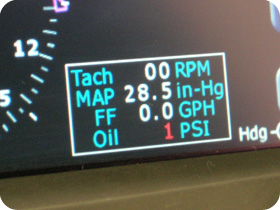
- All Engine Failures (In
the pattern or at altitude)
Establish and maintain manual control during power loss, best glide speed operation, and emergency landing procedures.
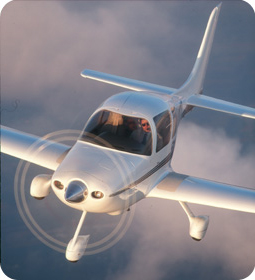
- Emergency Descent
Always hand fly an emergency descent.
|
|
NOTE |
||
| Page 10 |
Cirrus Monthly Proficiency Program
February– Two for One:
Using the Autopilot to Manage Workload
![]()
Common Errors
Occasionally, autopilot systems do something
that you don’t
expect. Most of the time, you can trace the problem back to a
user error. While the S-Tec 55X is very advanced, it is not difficult
to use when you understand the system.
| Page 11 |
Cirrus Monthly Proficiency Program
February– Two for One:
Using the Autopilot to Manage Workload
![]()
NTSB ACCIDENT REPORT
Now that you’ve learned about the
importance of the autopilot as a tool to manage workload and
expand your Single Pilot Resource
Management skills, click on the following link to review an NTSB
Accident Report:

Analyze the accident. Think about how the proper use of an autopilot system might have helped prevent the accident.
- What features of the autopilot might have helped the pilot maintain control of his airplane?
- What procedures discussed in this month’s Pilot’s World might have led to a more desirable outcome?
- What weather-based decisions might have prevented the accident?
![]()
| Page 12 |
Cirrus Monthly Proficiency Program
February– Two for One:
Using the Autopilot to Manage Workload
![]()
OBJECTIVE
This month’s flight segment incorporates
autopilot use into your in-flight activities. The objective
is to practice
and reinforce proper use of the autopilot as you manage your
cockpit workload with automation.
Complete the following autopilot exercises by incorporating them into your flight activities. Ideally, you will complete these exercises with a CSIP instructor on board to help critique and assess your performance. Always maintain situational awareness and never compromise the safety of yourself or others.
Flight activity items to complete:
- Complete a Personal Weather Minimums assessment.
- Obtain a thorough pre-flight weather briefing.
- Make an appropriate go/no-go decision for the flight.
- During flight, practice using the autopilot to:
- Reduce your workload.
- Efficiently manage normal operations
- Assist in managing abnormal and emergency operations
- Properly select the correct modes and
navigation sources to achieve
the desired result.
![]() For
a Printable PDF version of this information, CLICK HERE.
For
a Printable PDF version of this information, CLICK HERE.
![]()
| Page 13 |
Cirrus Monthly Proficiency Program
February– Two for One:
Using the Autopilot to Manage Workload
![]()
You will successfully complete the February Cirrus Monthly
Pilot Proficiency program when you have gained a thorough
understanding of the autopilot system and use it to reduce
workload and increase situational awareness. Additionally,
you will understand how to properly use the autopilot’s
modes and functions, as well as manage abnormal and emergency
situations that may require immediate autopilot use or disconnection.
Thanks for visiting Cirrus Pilot’s World and taking the February Monthly Proficiency Program. We hope you enjoyed the experience and that it has helped to increase your awareness, skill and proficiency in safely flying your Cirrus SRV, SR20 or SR22. Please take a moment to give us your feedback about this month’s course. Your suggestions will help us provide you with courses to improve your all-around flying safety and enjoyment Write to us at: pilotsworld@cirrusdesign.com. See you next month!
|
| Page 14 |

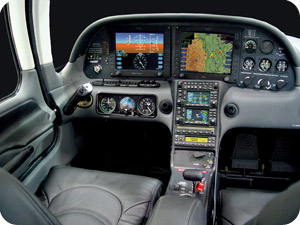 Professional
pilots often work in two-pilot crews for added safety,
situational awareness, and workload capability. While
you may not have the option of flying with a second pilot,
you do have the next best thing: your autopilot!
Professional
pilots often work in two-pilot crews for added safety,
situational awareness, and workload capability. While
you may not have the option of flying with a second pilot,
you do have the next best thing: your autopilot! 